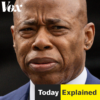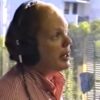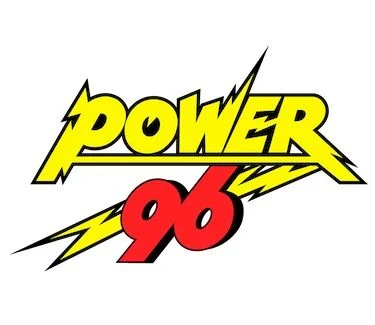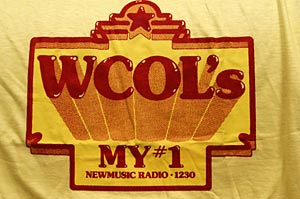-
 play_arrow
play_arrow
AircheckRadio Aircheck Radio
-
 play_arrow
play_arrow
Quid pro bros Vox
-
 play_arrow
play_arrow
Miami-Fort Lauderdale Barry Wright
Miami-Fort Lauderdale: A Radio Battleground Like No Other (1960s-1980s)
“Radio wasn’t just background noise in South Florida—it was a way of life. The jocks were our rockstars, the stations our best friends, and the competition? Cutthroat.”
Miami and Fort Lauderdale have always been hot markets—not just for tourists and nightlife, but for radio. From the 1960s through the 1980s, South Florida’s airwaves were some of the most competitive in the country. Whether it was the legendary Top 40 wars on AM, the rise of powerhouse FM stations, or the fierce battle for the hearts of listeners, this market produced some of the biggest names and moments in radio history.
The AM Wars: WQAM vs. WFUN – A Rivalry for the Ages
 In the ‘60s, AM radio ruled, and WQAM (560 AM) and WFUN (790 AM) were the kings of the dial.
In the ‘60s, AM radio ruled, and WQAM (560 AM) and WFUN (790 AM) were the kings of the dial.
-
WQAM (“Tiger Radio”) was the market leader, owned by Storz Broadcasting, which practically invented Top 40 radio. With fast-paced DJs, big promotions, and a constant stream of the latest hits, WQAM set the standard for AM radio in Miami. The legendary Rick Shaw, one of the most respected DJs in the industry, ruled the airwaves, and guys like Ted Clark, Charlie Murdock, Roby Yonge, Jim Dunlap, and Don Lancer helped make WQAM the station to beat.
-
WFUN was the scrappy challenger, always nipping at WQAM’s heels. With Larry King (before his talk radio fame), Jack Gale, Big Wilson, Jerry K, Steve Kelly, and Jim Dunlap (yes, he did stints at both WQAM and WFUN), WFUN had an exciting sound that kept the competition fierce. Their promotions were wild, their jingles were iconic, and their audience? Passionate.
The battle between these two stations was legendary—contests, record label exclusives, and even listener call-in wars. They fought for ratings down to the decimal point, and for years, Miami listeners benefited from the back-and-forth.
The Shift to FM: Y100 Changes the Game
By the early ‘70s, FM was starting to take off. The sound quality was better, and the DJs had more freedom to experiment. While AM still dominated, stations like WHYI-FM (Y100), WEDR (99 Jamz), and WAXY-FM began pulling audiences away from the static-filled AM dial.
-
Y100 (WHYI-FM) signed on in 1973 and quickly became a monster. Led by Program Director Bill Tanner, the station was full of personality. Sonny Fox, Mark St. John, Jack McCoy, and the infamous “Tanner & Company” morning show made Y100 a must-listen station for South Florida teens. The station became known for its massive promotions—whether it was cash giveaways, wild contests, or exclusive concerts, Y100 understood the magic of FM radio in the ‘70s and ‘80s.
-
WEDR (99 Jamz) was another FM station that made waves. Originally a jazz station, WEDR transformed into Miami’s go-to station for R&B, funk, and later hip-hop. With an audience that stretched from Overtown to Opa-locka, WEDR carved out a loyal following with a mix of music and on-air personalities who spoke directly to the Black community.
-
WAXY-FM (106) tried something different. With an album rock approach, they were Miami’s answer to progressive FM radio, where longer songs and deeper tracks found a home. Bob Gordon and Lee Sherwood were among the voices that helped WAXY stand out.
The DJs: The Real Superstars
Miami radio wasn’t just about the music—it was about who was playing the music. These guys (and a few groundbreaking women) were celebrities in their own right:
- Rick Shaw (WQAM, later WMXJ) – The godfather of Miami Top 40 radio. If you grew up in Miami in the ‘60s or ‘70s, you knew Rick Shaw’s voice.
- Sonny Fox (Y100, WBGG, WZTA, WSHE, WINZ) – A loud, wild, unpredictable DJ who knew how to entertain.
- Bill Tanner (Y100, Power 96) – The genius behind many of Miami’s most successful stations.
- Mark St. John (Y100, 96X, WAXY-FM) – A versatile talent who made an impact on multiple stations.
- Roby Yonge (WQAM, WFUN, later WABC in New York) – A DJ with a cult following, even after he was fired for announcing The Beatles’ “death hoax” on-air.
- Larry King (WFUN) – Before he was a national talk show legend, he was spinning records in Miami.
- Don Cox (Power 96) – One of the great ‘80s Miami FM voices, known for his high-energy style.
- Bo Griffin (Hot 105, Y100) – One of the most dynamic female DJs to grace the Miami airwaves.
WHYI Y100 Miami – Bill Tanner – July 1976 – Radio Aircheck
Promotion
s & Listener Engagement: The Secret Sauce
South Florida radio wasn’t just about playing music. The stations were masters at connecting with listeners through promotions and contests:
- Cash Calls & Mystery Voices: Callers had to guess the mystery celebrity or say a secret phrase to win huge amounts of money.
- Concert Blowouts: Stations like Y100 and WQAM worked with record labels to bring artists to town, making South Florida one of the best places to see exclusive performances.
- Crazy Stunts: DJs would broadcast from billboards for days, jump out of airplanes, or eat disgusting things to get press and ratings.
The Legacy of Miami Radio

By the late ‘80s, FM had fully taken over, and AM stations had mostly shifted to talk formats, sports, or Spanish-language programming. The spirit of Miami radio, however, never died. Many of the DJs who dominated the airwaves went on to work in other major markets or found second careers in television, media, and business.
Some stations, like Y100, continued to evolve and remain relevant, while others, like WQAM, transformed into sports radio giants. The arrival of Power 96 (WPOW-FM) in the ‘80s brought yet another competitor into the mix, adding a dance-friendly, bass-heavy sound that fit Miami’s party culture.
Even today, when radio faces competition from streaming and digital media, Miami still has a thriving radio scene. The reason? That passionate connection between the station, the DJs, and the listeners never faded.
Final Thoughts
“Back then, radio wasn’t just something you listened to—it was something you belonged to. Whether you were a Tiger Radio fan, a Fun person, or a Y100 fanatic, your station was part of your identity. And in Miami, that meant everything.”
The battle for Miami’s airwaves wasn’t just about ratings. It was about who could win the hearts of South Florida’s listeners. For those who grew up in the ‘60s, ‘70s, or ‘80s, turning on the radio wasn’t just about hearing music—it was about feeling alive.
Written by: Barry Wright
MIAMI RADIO SONNY FOX WQAM Y100
Similar episodes
Most Liked Airchecks
Events
Support Aircheck Radio
Copyright 2025 Aircheck Radio is a proud listener supported 501(c)(3) nonprofit organization




